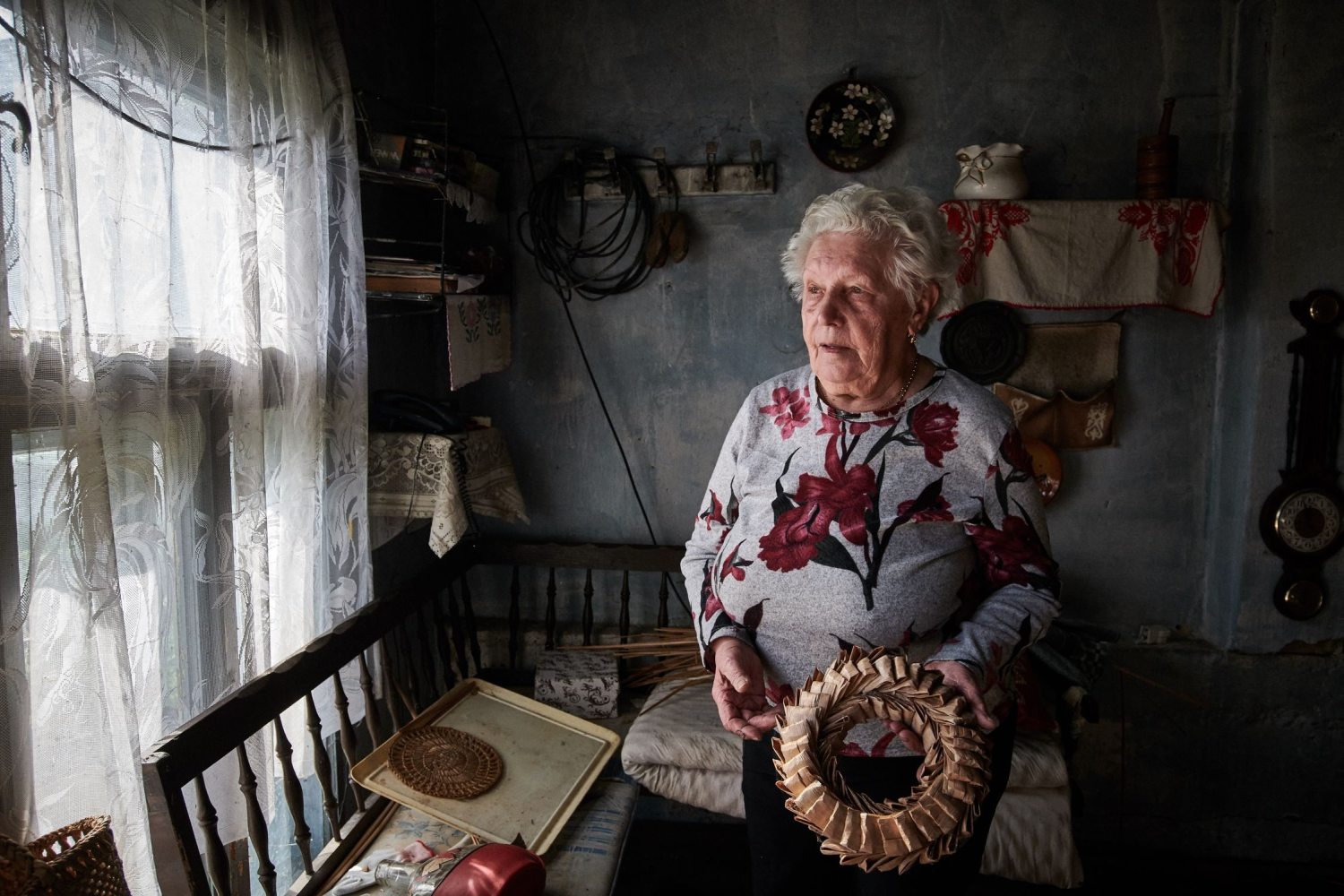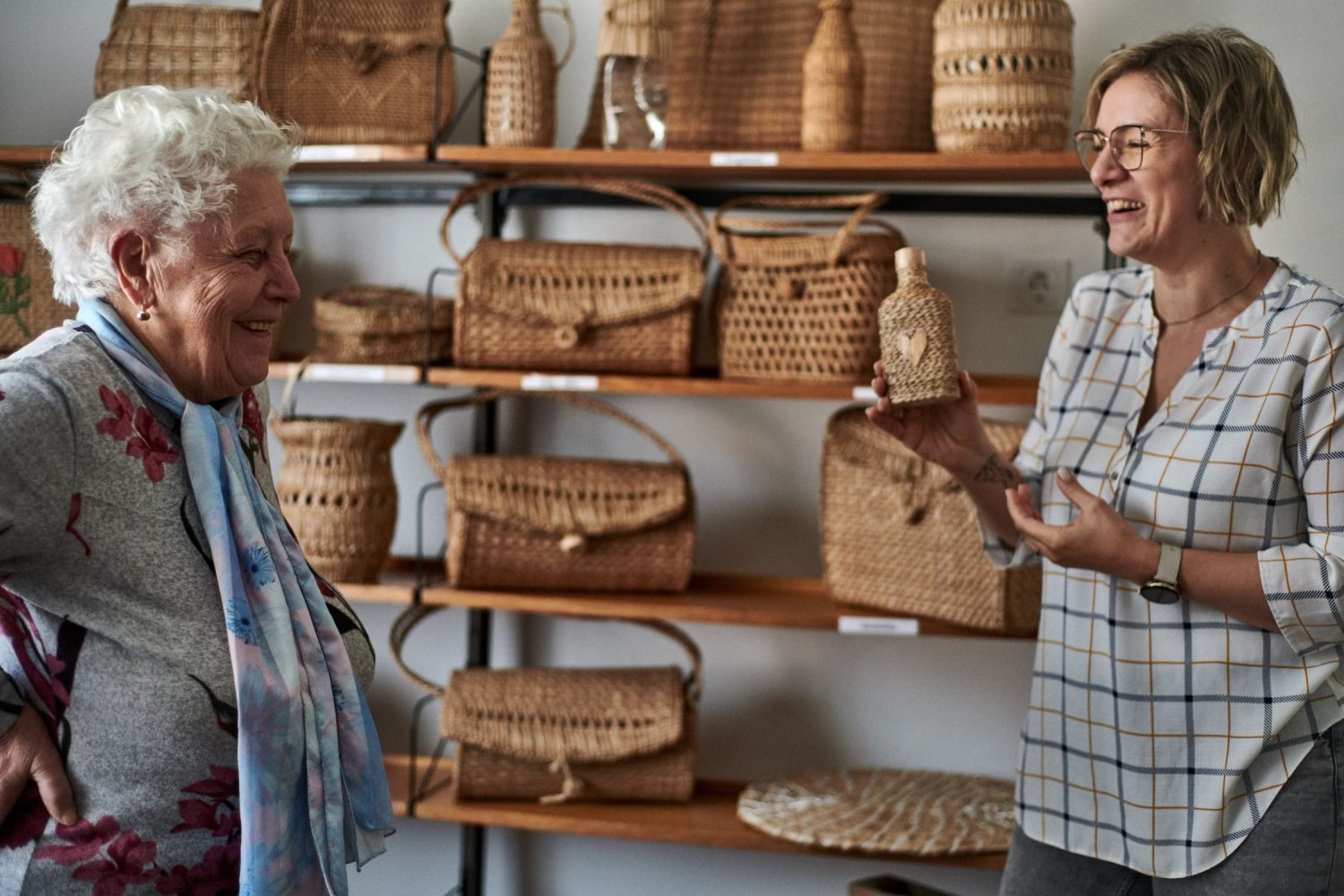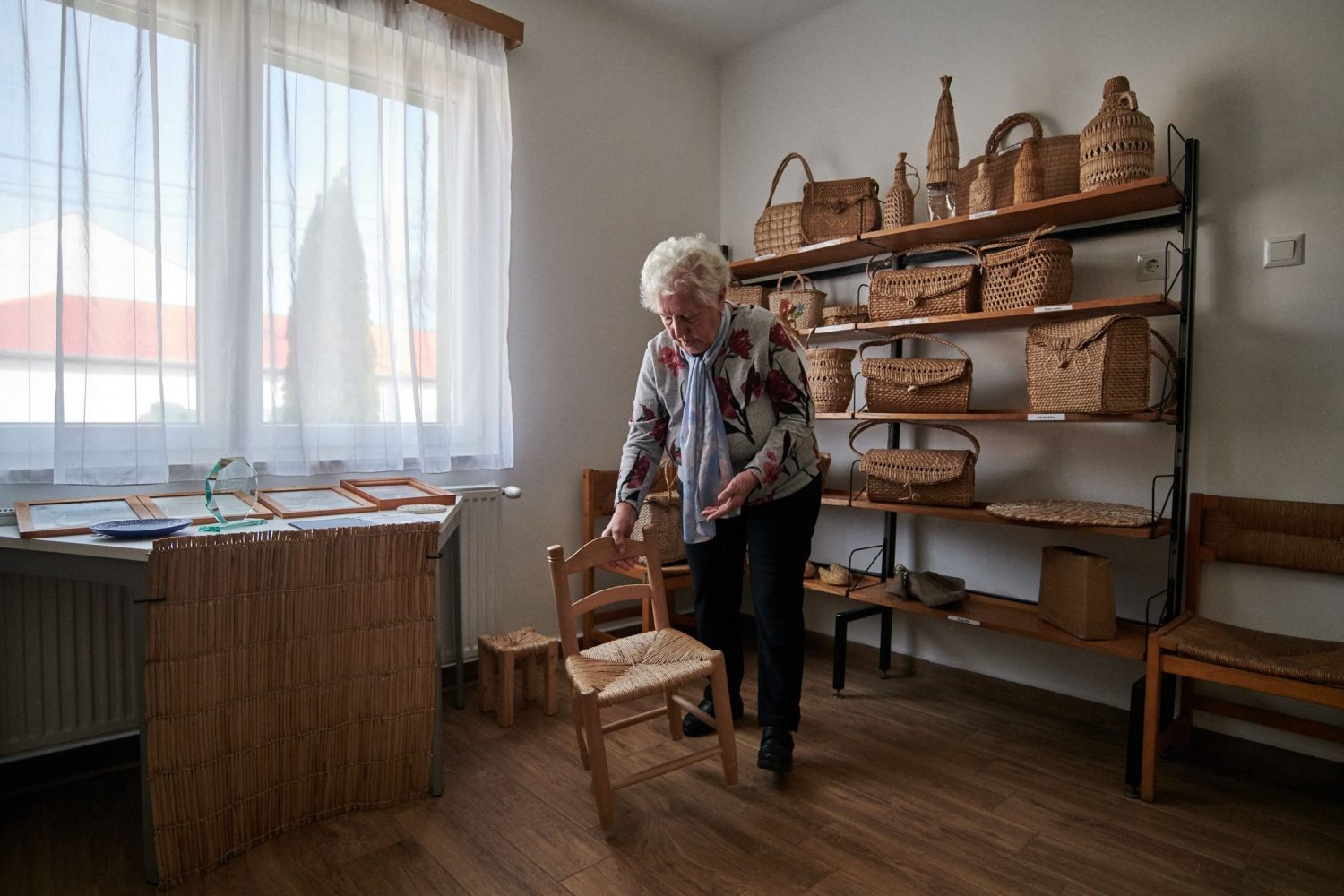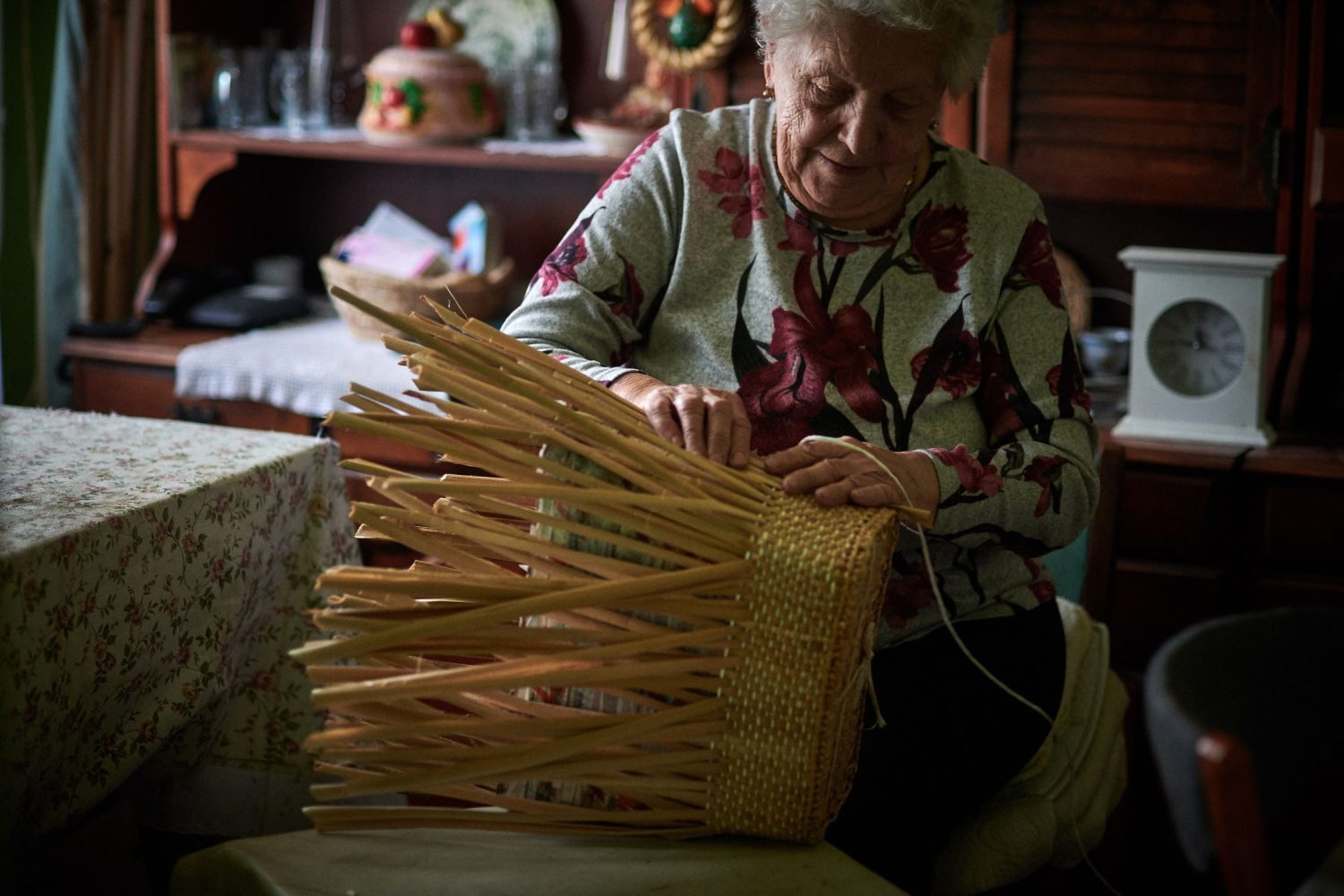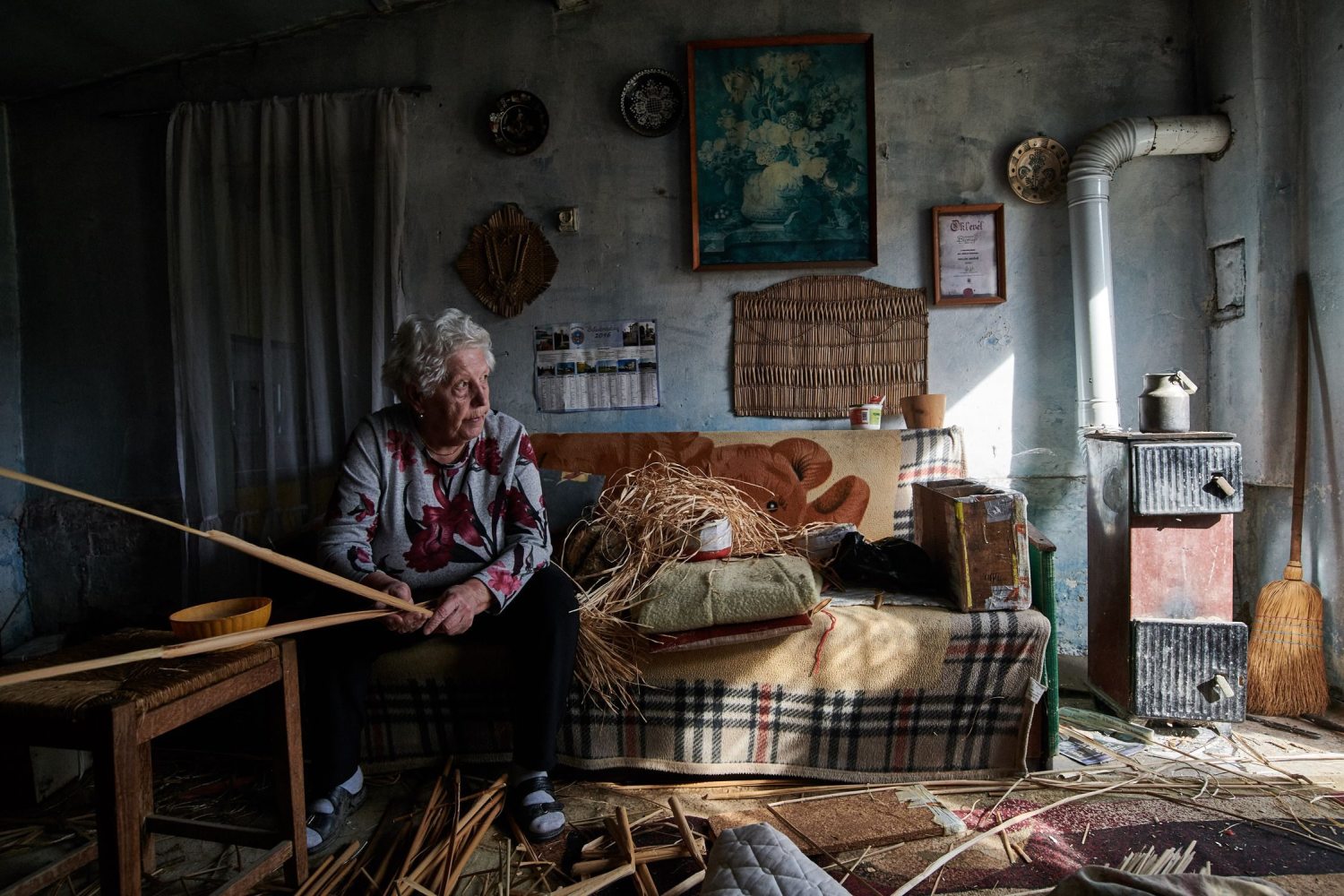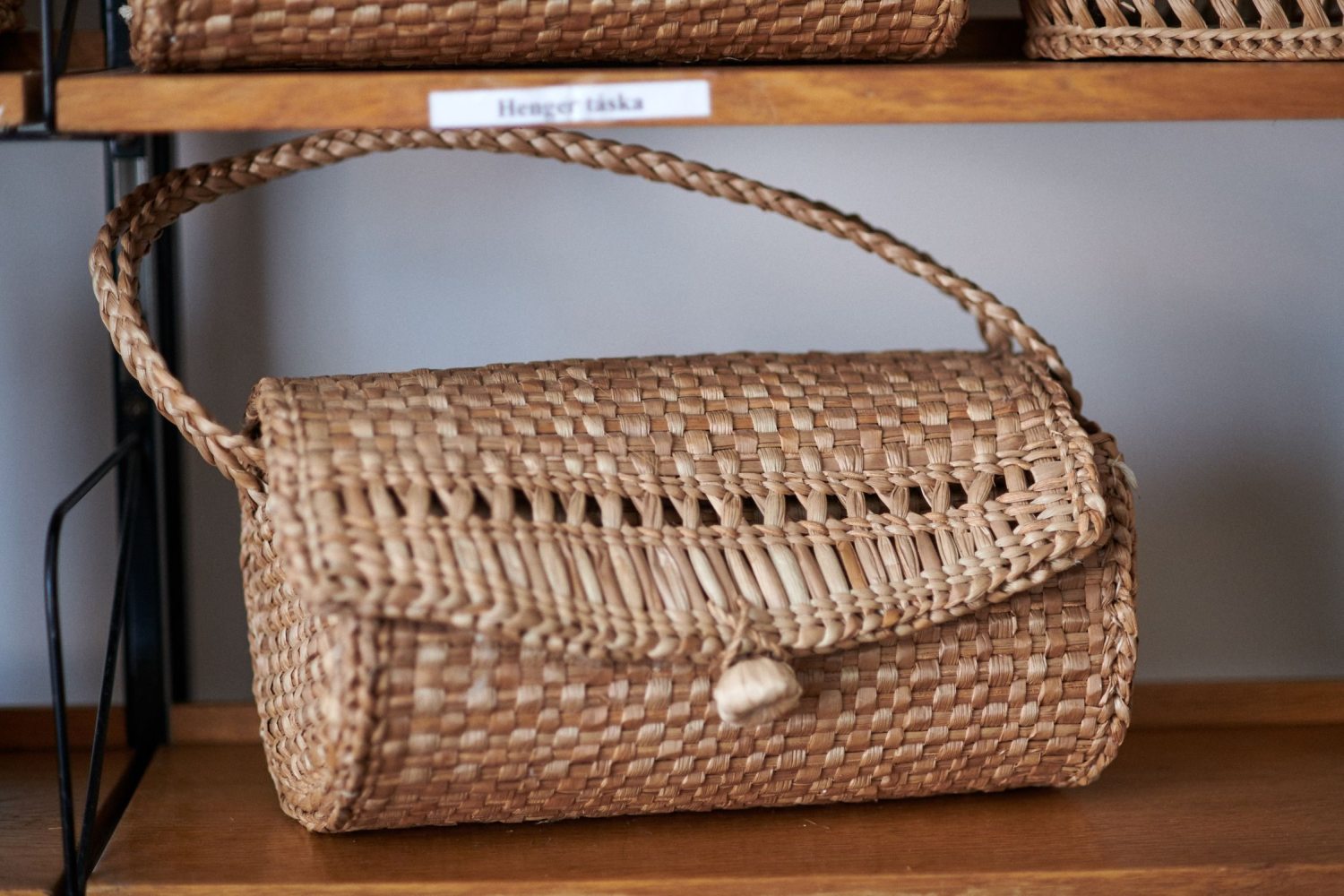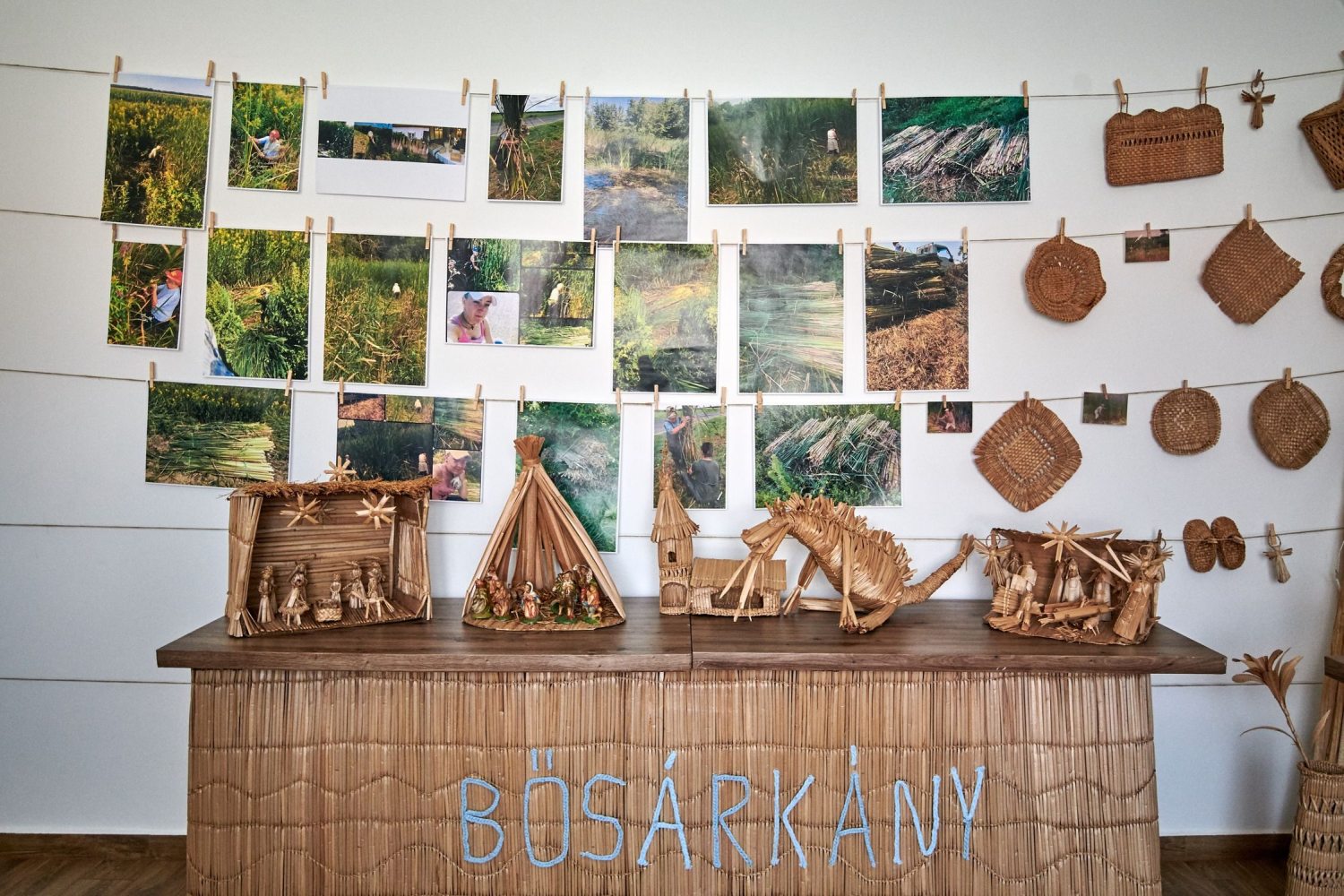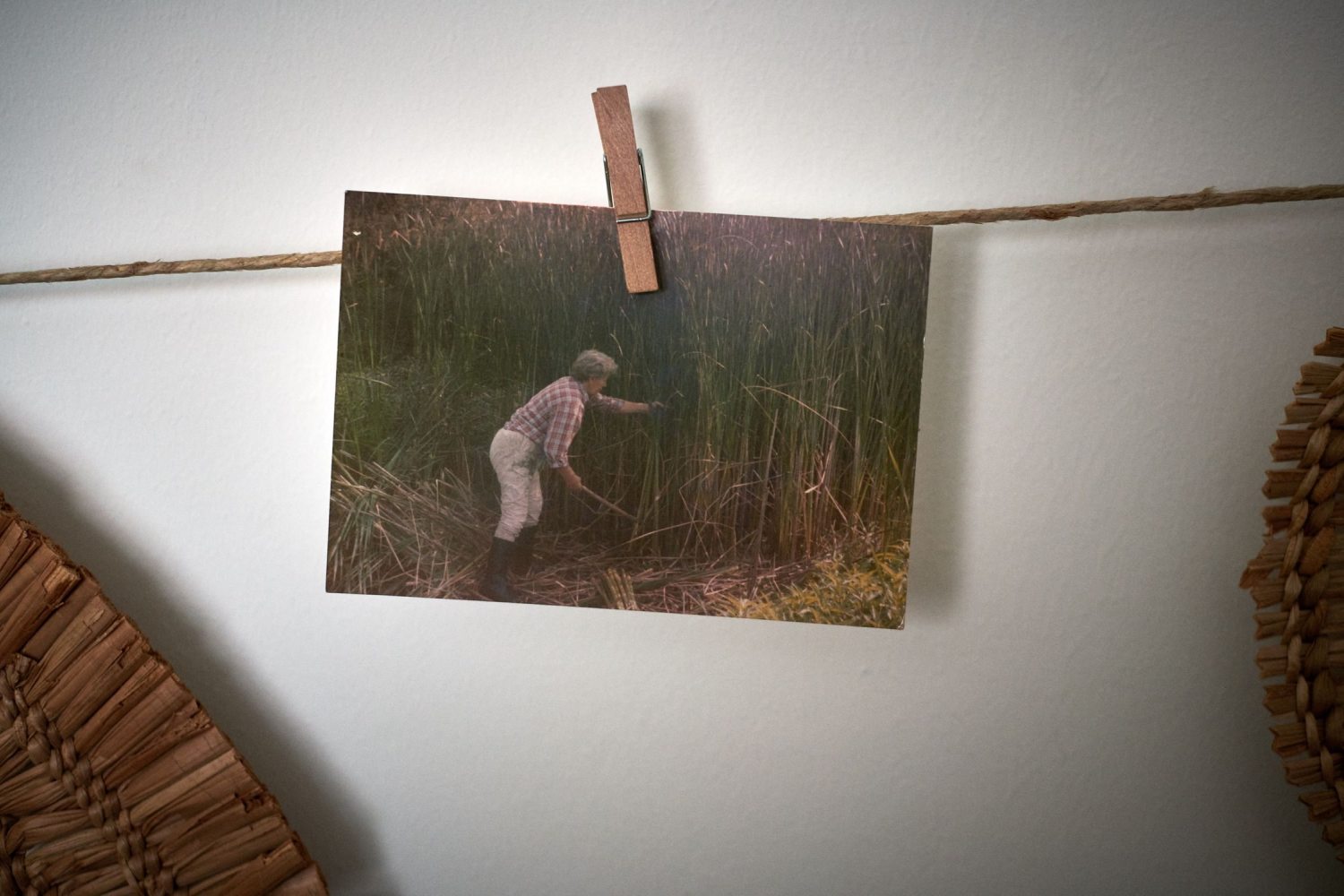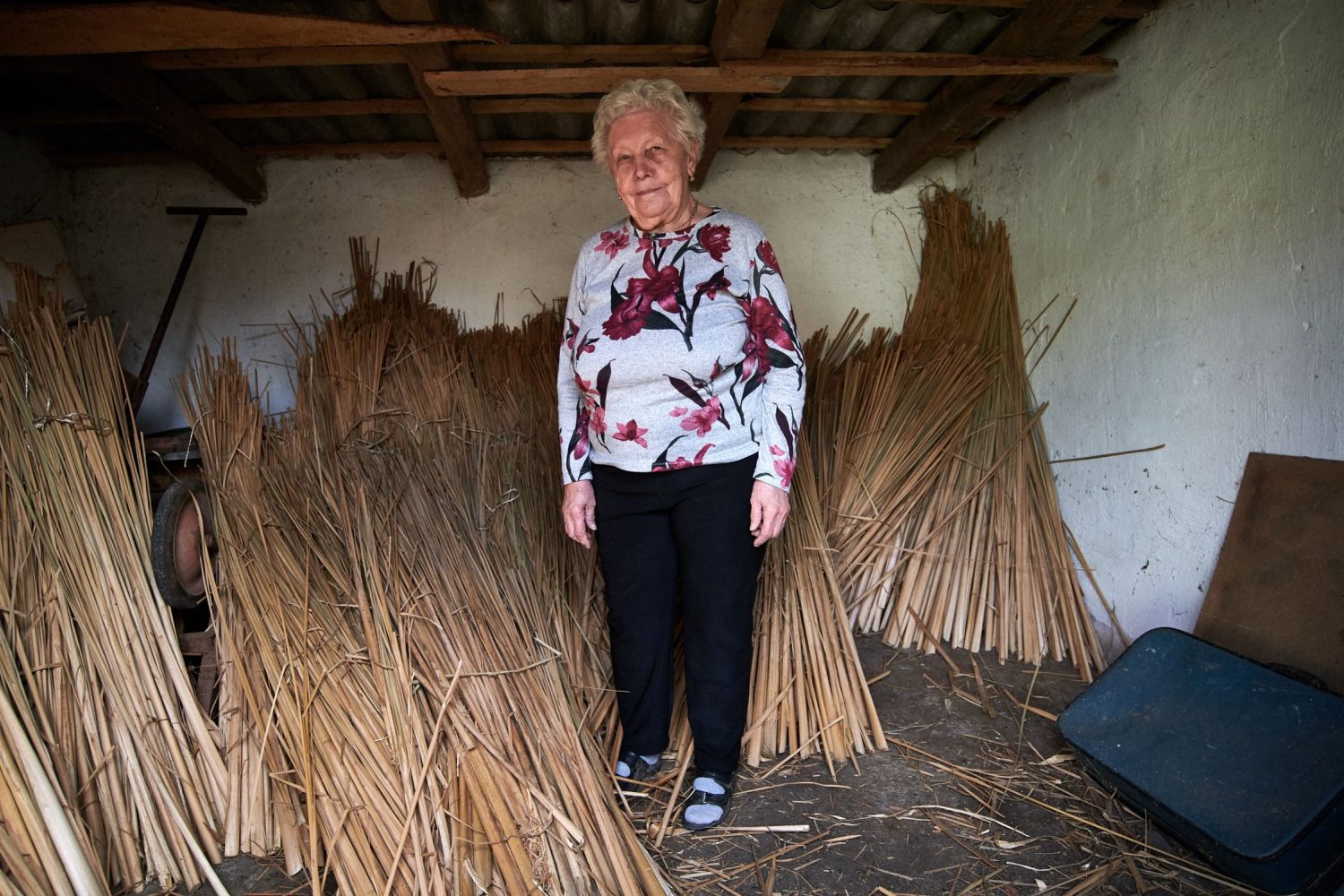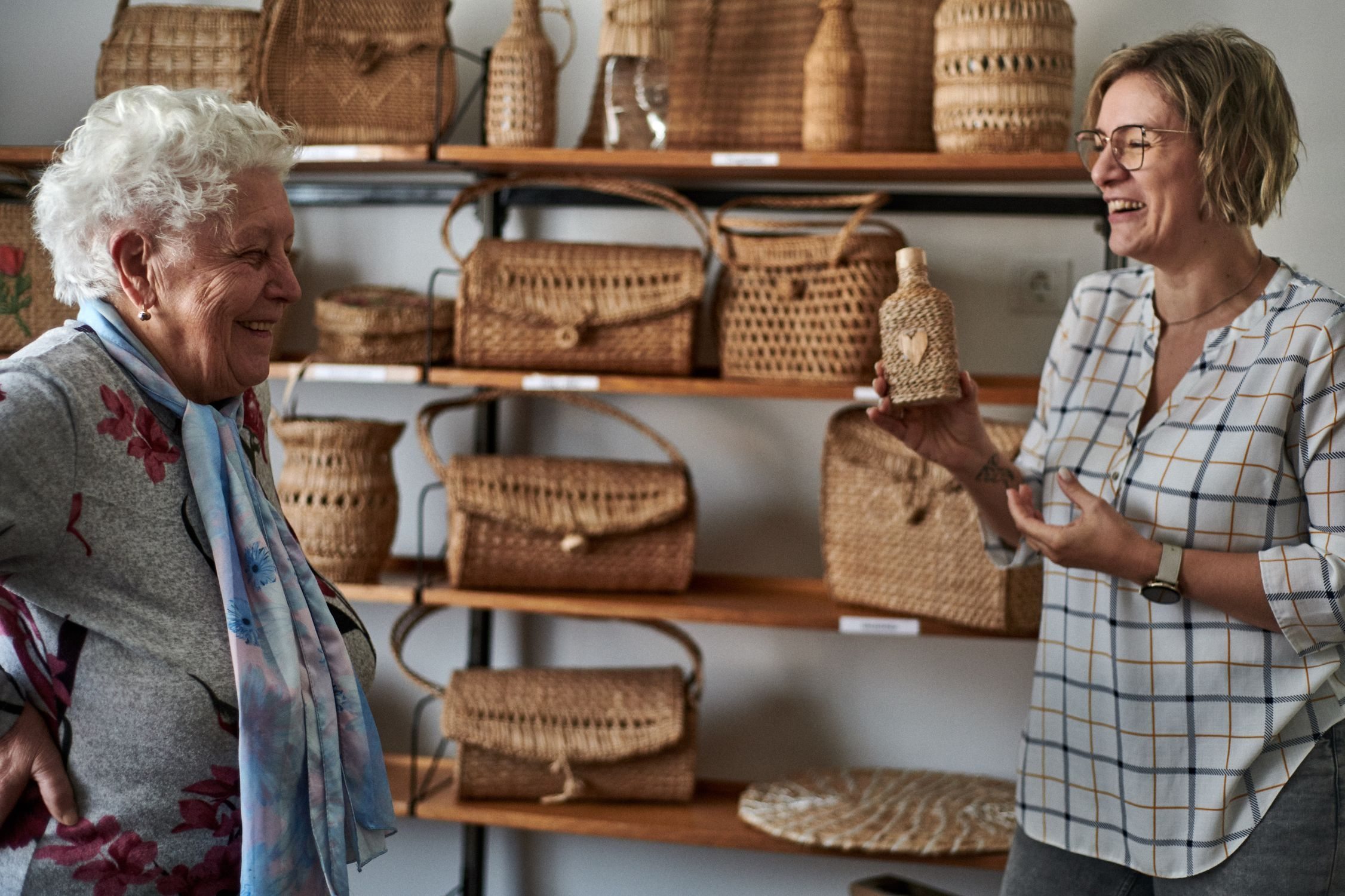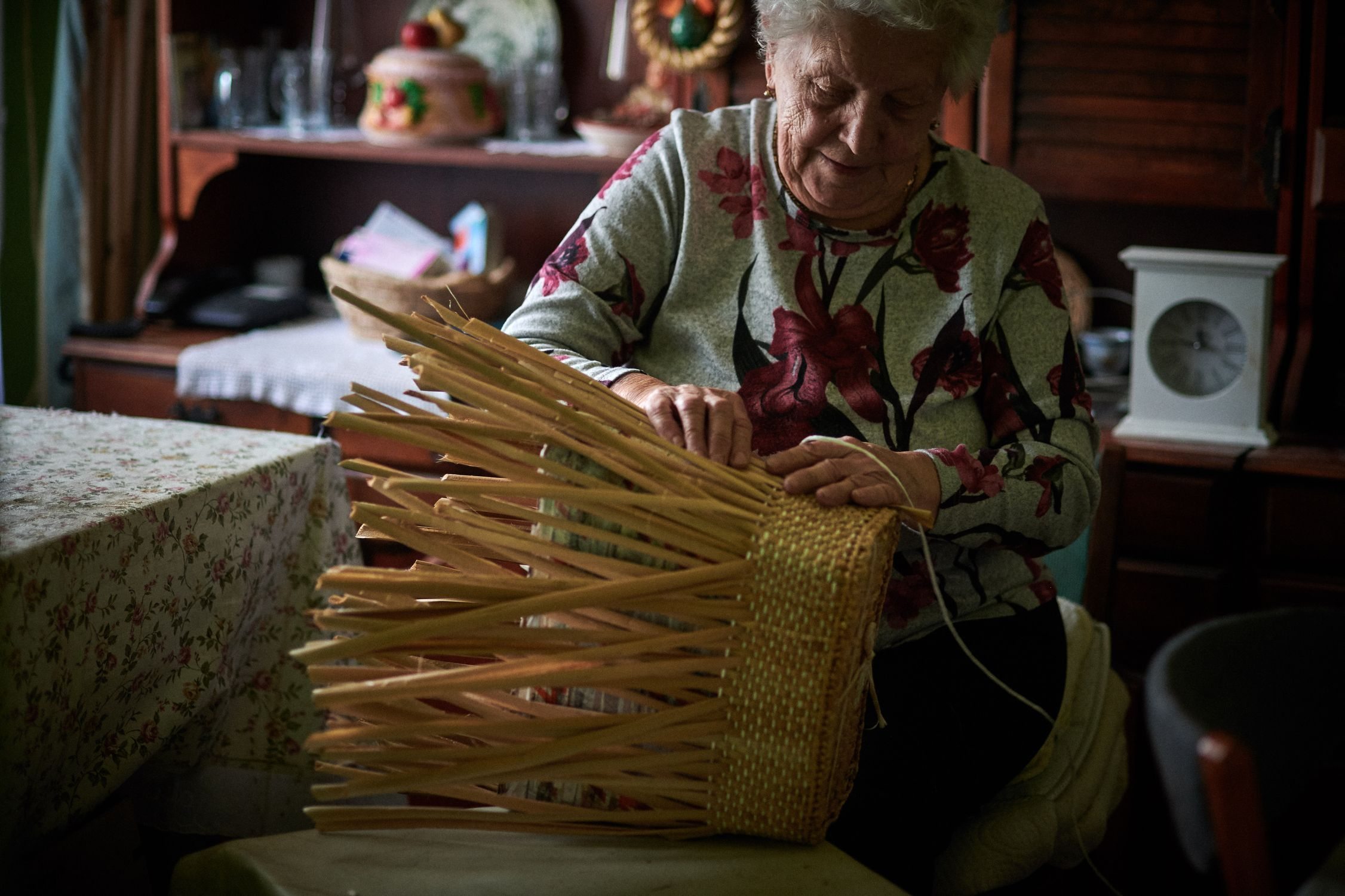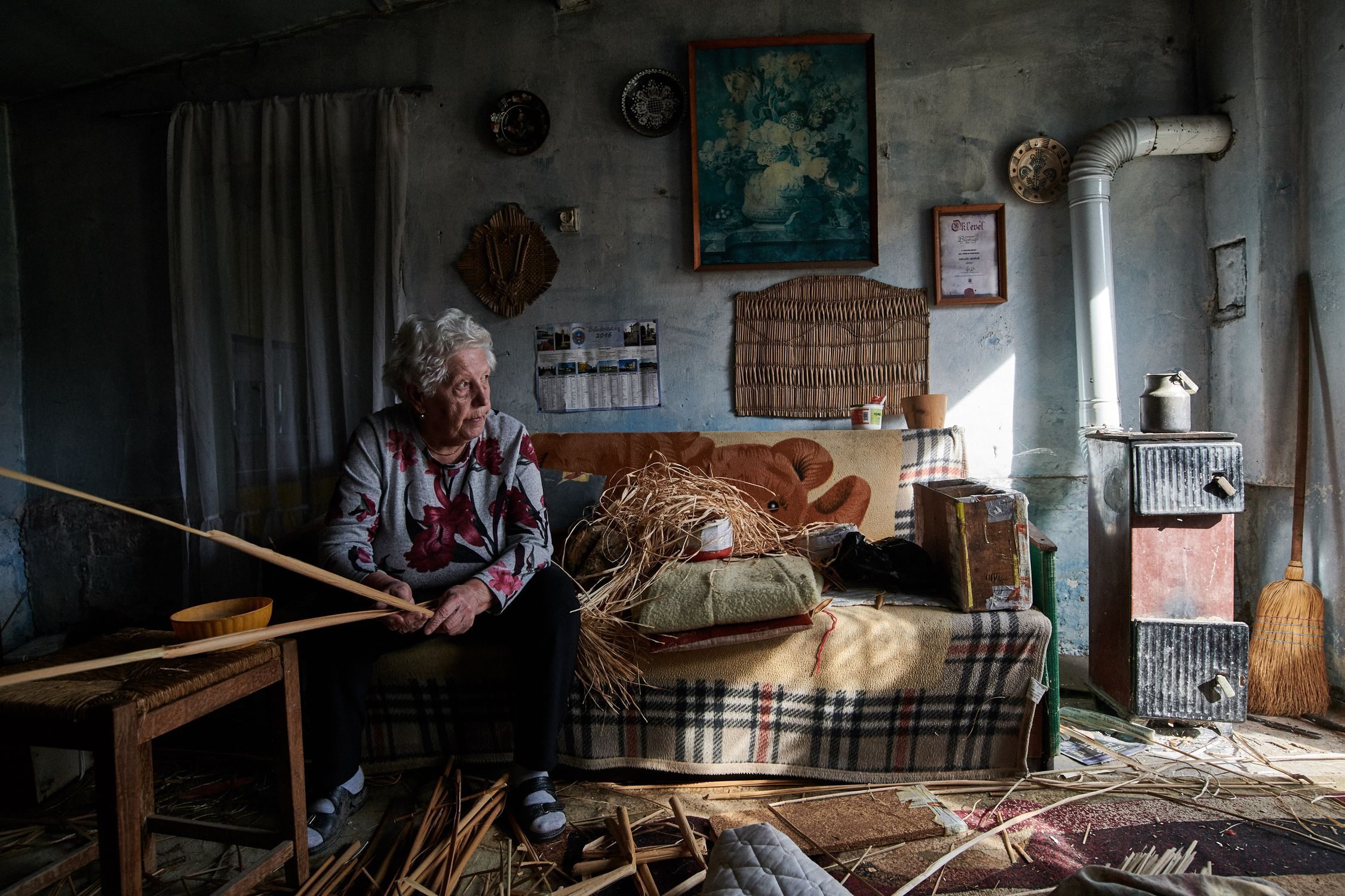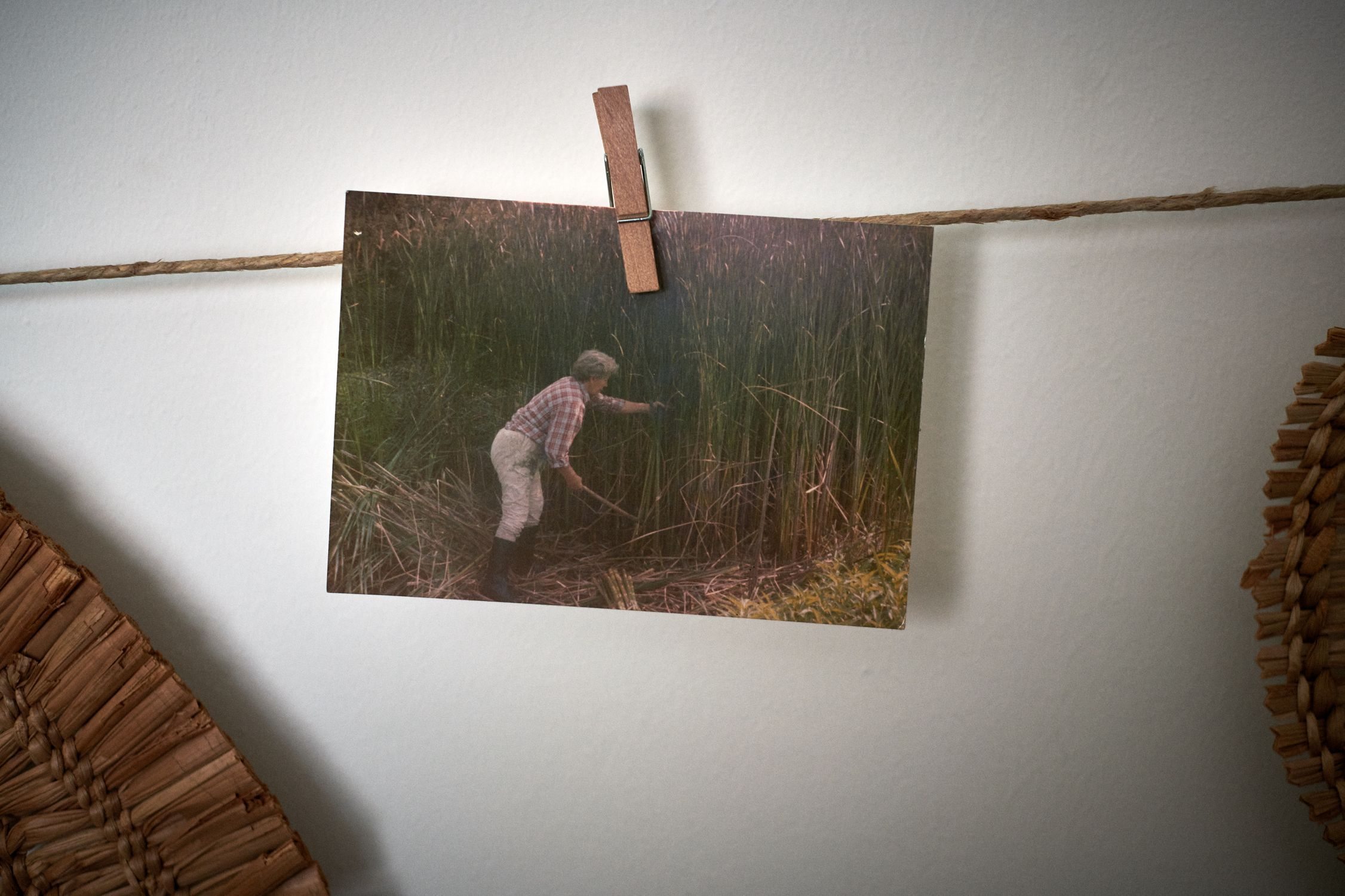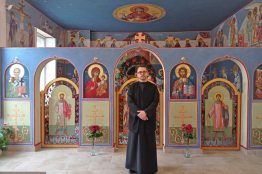Bitten by leeches, and slept in stables, but even at the age of eighty-four, Elvira Kollár Jenőné pursues her rare vocation
I wish I could be like her when I reach this beautiful age! This is what I thought after meeting Mrs. Elvira, a woman with an incredible temperament, whose vitality and attitude to life filled me with admiration. The passion with which she carries out the work that has always filled her daily life has not faded over the decades, indeed, she can't stop coming up with new ideas to make. Elvira Kollár Jenőné, aged 84, can make anything from cattail at her home in Bősárkány.
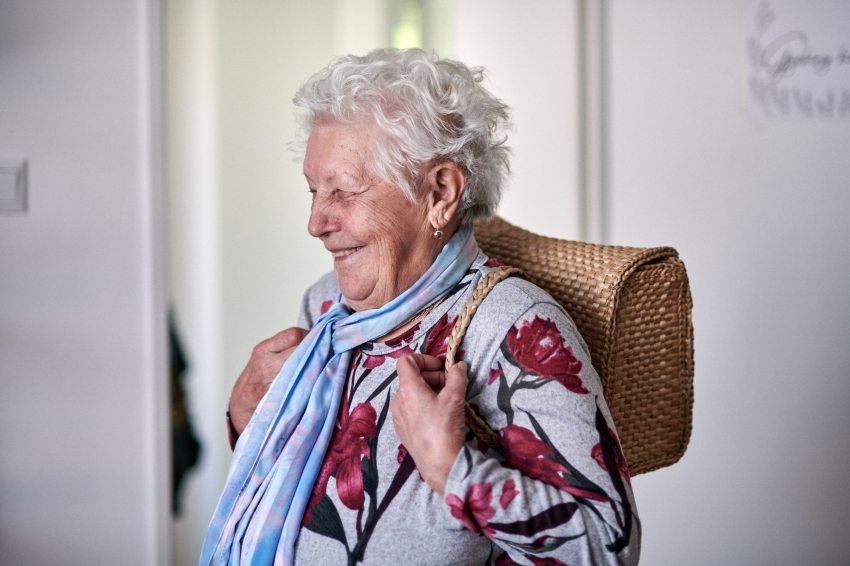
A trip to the last century
"Oh, my darling, you'll sink, you'll drown there, don't go, stay at home" - that's how my father sent me on my way when I was about fifteen, I'll never forget it. And I said to him, "No, I'm not staying, Father, I'm going to the harvest." Then I got on the train with the gang, and we were off to Nádudvar to harvest the cattails. That's how it all started," recalls Elvira, who was born into the Papp family as the seventh child during World War II. She was born in a village on the edge of the Hanság, and although she travelled all over the country, she lived with her family in Bősárkány all her life.
"At that time it was a fishing village. People were impoverished, but there were plenty of cattails, so cattail weaving became the bread and butter of the people. As I was told, around 1880 the village's head teacher went to Szeged to see how the girls wove baskets and bags from cattails. He brought one home and showed the students how to make it. They learned quickly and it spread like wildfire.
People were weaving baskets in every home. But everyone had to fetch the cattails for themselves and take what they made to the market.
Men would ride up to a hundred kilometers in horse-drawn carriages, on bicycles, or walk with the goods on their backs, peddling. They slept where it fell on them, living on dry bread. By the way, dear, let me get you some cake to chew on."
And she busies herself, picking up the basket someone brought for repairs, and gets to work, while her stories take me back to the last century. I learn that the "Couple of Győr" was a forty-two and a forty-centimeter nesting bag, made in pairs and taken to town. Each piece cost forty fillér (pennies), but in the 1930s basket weavers were not paid in cash, only a piece of paper. You could use it to buy things in the grocery store after the grocer had taken his profit from it.
It was this vulnerability that prompted the Cottage Industry Co-operative, which was set up in the spring of 1937 with the help of local intellectuals and greatly improved the situation of the basket weavers. The cooperative continued to operate during the Second World War. On order from the war industry, they made so-called guard boots with three-ply braids to protect soldiers' feet from freezing at the front. For the wounded in hospital, they wove slippers from cattails. After the war, they also fulfilled many orders to the West, and wagonloads of baskets were shipped abroad. By the 1950s, the cottage industry had nearly four hundred members, providing a steady livelihood for the weavers for decades.
And it went on and on
"It's a bit dirty," she points to the dry pile of plants in the kitchen, "I work in the workshop in the summer, but I can't do without it in the winter, so I bring it in. You can't weave without the cattails, so you have to go into the shallows to get them.
I harvest the cattails myself, to this day. The only time I didn't go was when my kids were born, and today I stay home when my health doesn't allow it.
Yes, we still go. This year we will go to Jobahaza, Magyargencs for the raw materials. Harvest has always been great fun. Even if it is a man-trying job. We always left at the beginning of August, travelled by train, and took the food with us: bread, bacon, ham, beans and pots, because we cooked every night. Sometimes we slept in stables, other times in large sheds on the blankets we had taken with us.
We harvested for four or five weeks, often standing in waist-deep water. We wore trousers made of strong canvas, tied at the waist or below the breasts. This was our defence against the leeches, there were always plenty of them on us. The stockings came up to our knees and we put our rubber boots on over them. Then we had football boots because they didn't slip. Especially when you had the "cleats" on the soles, because with those you could hold firm under the water. We grabbed four or five stalks of cattails and cut them right off with a one-metre-long sickle. When we had a knot about forty centimetres in diameter, we laid it on a twisted rope and tied it up. Sometimes I would sit on top of it and then use the sickle to paddle it out to shore. The men shouted, "Elvira, no, you'll sink!" - but I always made it ashore.
We spread it out there and let it dry until the end of the harvest. We rotated it every five days to make sure it didn't rot. At the end of the harvest, eighty to one hundred wagons arrived at the station in Bősárkány. We distributed them there and even at home we spread them out in the yard, leaned them against the side of the house, rotated them, and let them dry out completely. Then it went to the attic, or workshop, depending on which one you had.
Then we would weave all year round. Three or four of us women would get together and if it was busy season, we'd work until dawn.
Until the late sixties, this was the main occupation of everyone in the village."
An inherited vocation
I watch the cattail-threads come to life under her hands, and the basket grows ever larger. She talks about each and every part of the cattail and how to use it in such detail that, even as a "city girl", I quickly remember what to do and how to do it. I learn that the lower, usable part of the cattail stalk, about two meters long, is the "nyila" ('arrow'). The cattails were split, and the two outer leaves were used only for firewood, which the baker used to heat the oven. The next two leaves were the "belevaló" ('inside'), crossed to make the base. The two inner stems were used as the leading stems and the middle cylindrical one was the "széke" (chair), the most valuable part of the cattail, used for weaving and making the handle.
The cattails were doused in hot water the night before processing to make them softer and more pliable. In the past, to make colourful flowers of various shapes and sizes to decorate the baskets and bags, they used to dye maize husks and raffia with paint made from tree bark, but today they use textile dye for that. We chat amiably and while we do so, memorabilia, certificates, medals, and old photos from the folk dancing days emerge from the bottom of the drawer.
"Wherever we performed, we decorated the stage with objects and flowers made from cattails. We travelled the country, we had a lot of fun, I loved to dance and sing. Even when I was a little girl, the singing lessons could only end with my song. But we went straight home after school, because my mother and father insisted that we did our homework. Then we could start weaving the side of the 'Couple of Győr', because those were woven separately, and like the funnel woven on the bottle, it was the children's job in every family.
Everywhere, parents passed on the craft, this was what we inherited, and we were happy to have a job at home. Time has flown by, but I still do everything with the same enthusiasm as before.
Of course, I'm not saying that sometimes it doesn't hurt here and there, but then I go to the workshop, speculate a bit, and then I make something. I give demonstrations to kindergarten and school children, and I find that boys are often more interested than girls. I've been invited to do demonstrations in nursing homes and the Mesterségek Háza ('House of Folk Arts'), and I've been invited to hundreds of places. I try to meet every request. Whether it's a locomotive with carriages, a small chair or a big slipper, a baby bathtub, a basket, a cross made of twine, a flowerpot, a doormat, whatever it is, I'll make it.
I have also considered balloons, barrels, and gas cylinders. A friend once said to me, "I want to decorate my Christmas tree with nothing but angels." I said, "What? Are you mad, Sári?" Then I made her so many little angels that the tree was overflowing with them. Let me just show you how it is done, dear, because it's really just two moves." And sure enough, within a minute I had the cattail angel in my hand. " Lately, people got obsessed with hats, so I've been making dozens of them. And I'm always coming up with something new just for my own amusement. And then, if it doesn't fit, I have to do it again, because only what's absolutely right is right ," says Elvira.
She wouldn’t change anything
She is keen to teach young people. Her daughter has also learned to weave cattails, and she gets a lot of help from one of her grandchildren. But she also took on "residential" training for college students a few years ago. "I had six or seven girls come and sleep at my place, and it was a world of fun," she says with a laugh. – They did everything as I showed them, chopping the cattails, weaving baskets and slippers, we had loads of fun. Many of them wrote their theses on weaving cattails. I would advise all young people, and even mothers with small children, to try it, to learn it, because it's worth it."
Elvira says she wouldn't change places with anyone. If she were faced with a career choice now, she would choose weaving again without a second thought.
She always considered her life precious and beautiful, her childhood as well as her youth and adult years. She faced many difficulties after the untimely death of her husband, but her work, and her passion for weaving, helped her through the most difficult times.
Even during his twelve years in the local cooperative, she continued to go to harvest regularly, and that hasn't changed as she has retired. Her children and grandchildren are grown up, she has many visitors and can count on their help, but there are times when she doesn't need anyone because, as she says, she likes the quiet. But she always needs to be busy, whether it's weaving or crocheting, because "creating is what keeps you going".
Her fine handicrafts are exhibited in the village library, ranging from the Hungarian coat of arms to the old church in Bősárkány, the imperial palace from an old folk tale.

